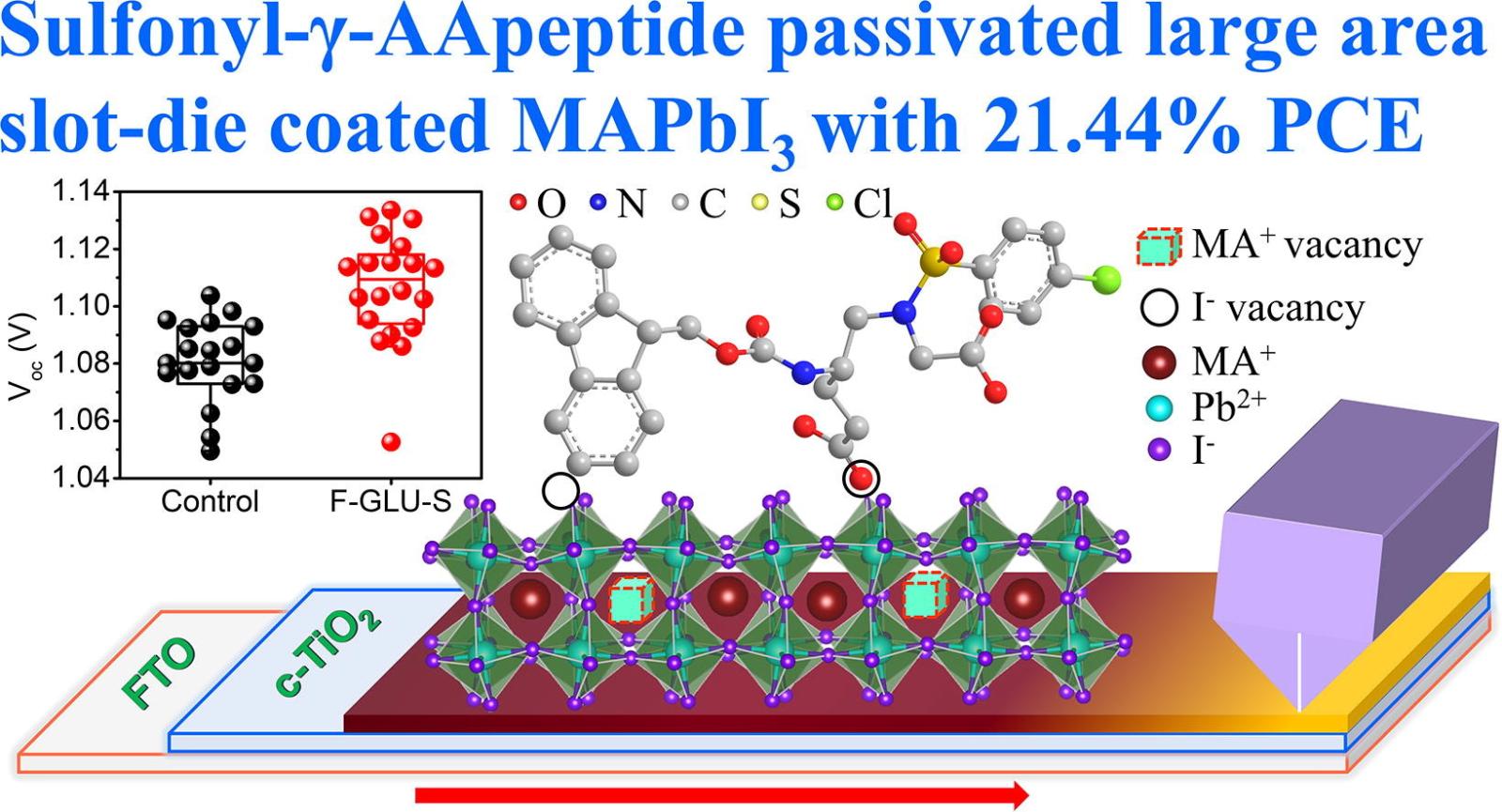
A group of scientists in the CEMOS Research Focus Area 3 are fabricating reproducible large area homogeneous perovskite films at room temperature and without controlling humidity (up to 40 % RH) with a slot die coater on a c-TiO2layer deposited using a large area chemical bath. A new artificial peptide – sulfonyl-γ-AApeptide (F-GLU-S) was employed to modify the slot-die coated perovskite surface, grain boundaries and electronic defects.
F-GLU-S modified slot-die coated MAPbI3 – based devices demonstrated outstanding performance of 21.44 % power conversion efficiency (PCE). In comparison, the control sample had a PCE of 19.1%. F-GLU-S passivation impeded the infiltration of moisture and oxygen due to its hydrophobic nature and defect repair potential.
Currently, most of the devices with high PCE are small area cells and prepared by the commonly employed spin-coating. However, spin-coating techniques do not deliver homogeneous films over large area. This is because the film quality deteriorates with increasing substrate area and is less favorable to preparing modules. However, the slot-die coating demonstrated higher yield and reproducibility due to the continuous and uninterrupted precursor supply and precise control of coating parameters, respectively. The PCE of slot die coated PSCs are highly influenced by perovskite crystallinity and morphology. In general, fabricating efficient large area perovskite cells, not only requires smooth, homogeneous, pinhole-free perovskite layers but also needs a suppressed electronic defect as well. The defect density of slot-die coated perovskites can be suppressed by additive engineering of the perovskite precursor solution, by post-surface passivation of the polycrystalline perovskite film, or by modifying the interface of perovskite with electron or hole transporting layers. Therefore, various passivation molecules were established to passivate halide vacancies, cation vacancies, and both halide and cation vacancies of the perovskite film. Herein, we present the passivation of slot-die coated MAPbI3 layer with an amphiphilic sulfonyl-γ-AApeptide - F-GLU-S. Particularly, the molecule is comprised of benzene, carboxyl, carboxylic acid, amino, sulfonyl, and chloro functional groups, which form strong interactions with the perovskite to significantly suppress both cationic and halide vacancies.
